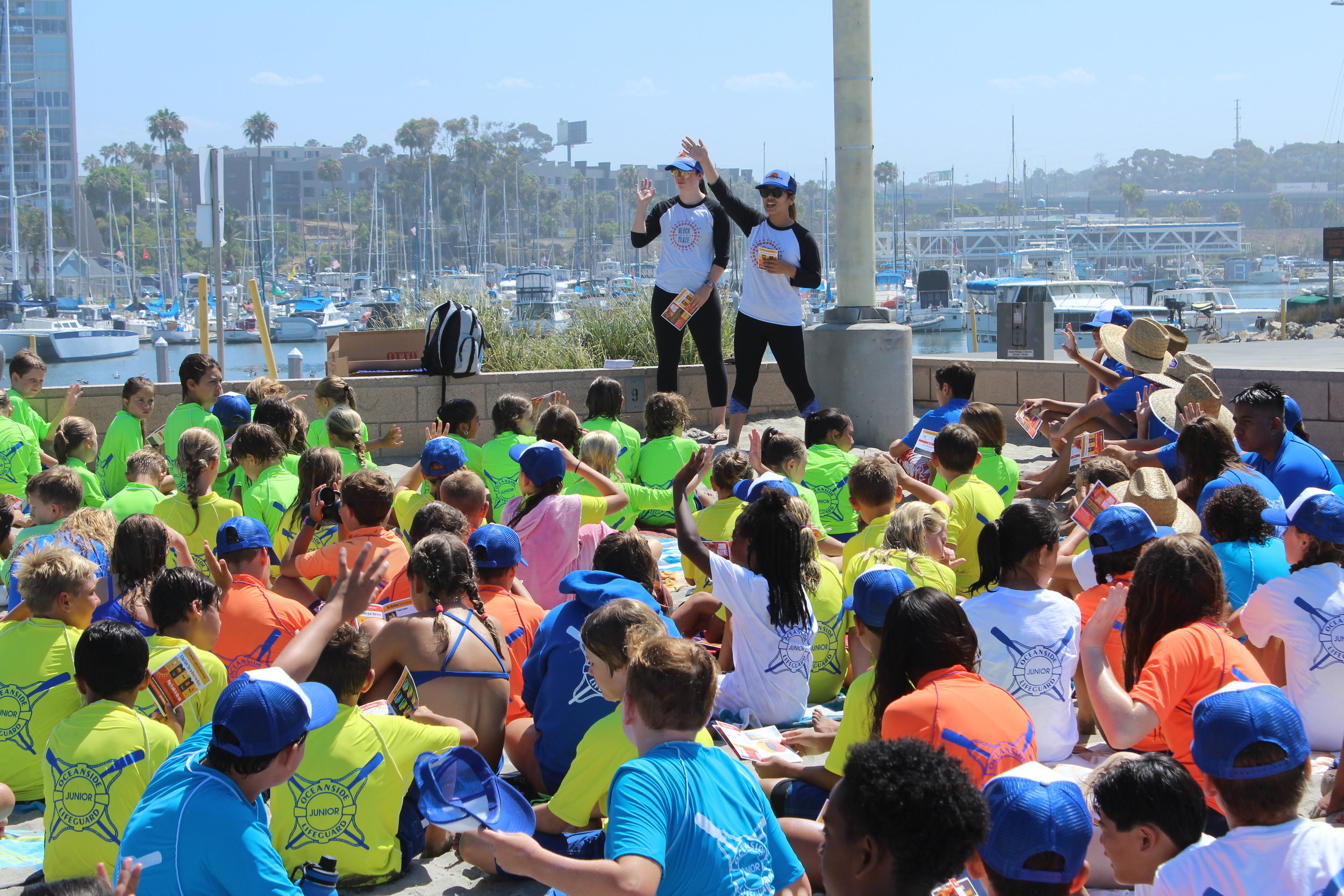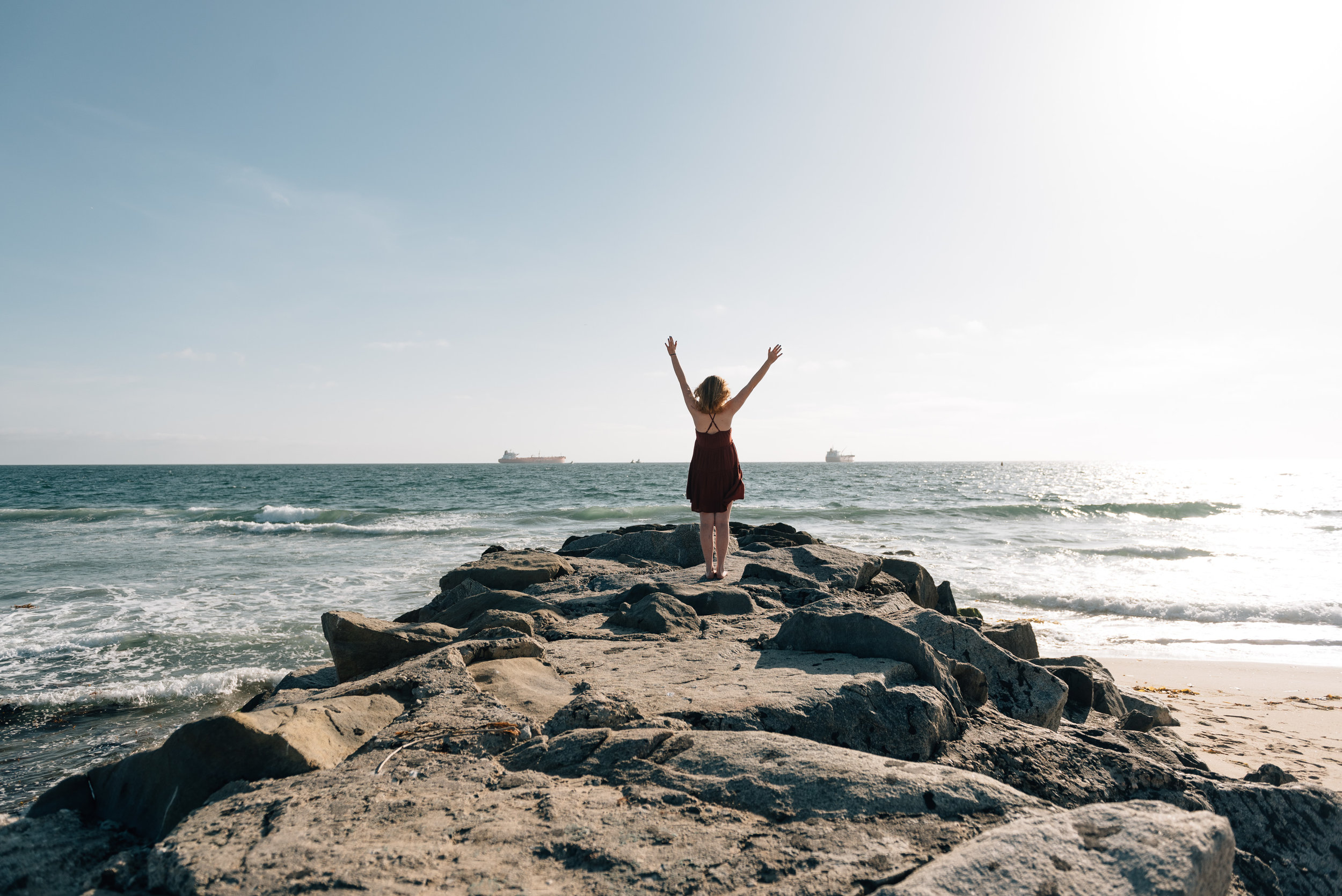Nearly 400,000 kids have been educated on sun-safety via Block the Blaze presentations.
Guarding against skin cancer, JWCF works to keep America’s youth sun-safe.
Written by Constance Dunn
Each year, the number of people diagnosed with melanoma continues to rise. In 2015, for instance, the Center for Disease Control and Prevention (CDC) reported about 80,000 new cases. This year, the American Cancer Society estimates that number will jump to over 96,000 new cases—an astounding increase.
Turning these numbers back is a national education program for youth headquartered in Newport Beach, California. Block the Blaze, a John Wayne Cancer Foundation (JWCF) initiative, is increasingly becoming a national force in the fight against skin cancer. “Unfortunately, skin cancer is the most common cancer, and most people don’t realize that,” says Lauren Fraga, senior program director. “Here in California, one in three people will be diagnosed with skin cancer in their lifetime.”
Block the Blaze began locally; it was aimed at youth groups, notably the City of Newport Beach Junior Lifeguard Program. Within its second year, it spread to include a handful of other junior lifeguard programs, and by year three had grown to cover nearly the entire state. The program has since expanded beyond California to include an additional 15 states, and Fraga gives credit to junior lifeguard programs for helping with this jump. “They’ve adopted this program, and they see the value in keeping their junior lifeguards sun-safe,” she explains. “They’ve been instrumental in growing Block the Blaze.”
It’s not just lifeguards who see the value of the program, however; teachers also see a dearth of skin cancer information in health textbooks. “The program has grown because it is really important information,” says Fraga. “Presentations cover skin cancer in depth, and include information about sunscreen, UV radiation and self-screening.” This focus on prevention and self-screening are sage due to skin cancer’s high cure rate—provided that detection and treatment are swift. During presentations, for instance, participants are encouraged to conduct monthly self-checkups for moles (“mole patrol”) and protect themselves with the hats and mineral sunblock sticks provided by the program.
Those interested in bringing Block the Blaze to their school or community can request a presentation via the website. Materials and program training are provided for out-of-state requests, and in-person presentations by Block the Blaze staff (currently only available in California) are typically run by people close in age to program participants, key to message acceptance by youth, notes Fraga. A potent voice in the fight against skin cancer, Block the Blaze recently hit an important benchmark by educating 400,000 youth about skin cancer. “We’re definitely in sight of having half-a-million youth who have been educated,” says Fraga, “and we’re really excited and proud of that.” johnwayne.org
Thirteen-year-old Junior Lifeguard Kennedy credits Block the Blaze for helping her find a melanoma on her forearm. “I was able to catch my melanoma quickly. All I needed was a few surgeries – I was lucky it was only Stage I,” she says. “That one little fact saved me from a much more dangerous situation. I can’t thank the John Wayne Cancer Foundation enough!”





